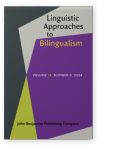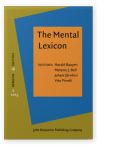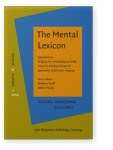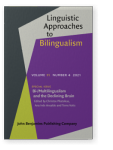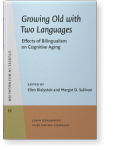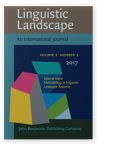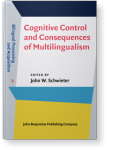Debra Titone
List of John Benjamins publications for which Debra Titone plays a role.
Journals
The Mental Lexicon (ML)
Edited by Harald Baayen, Melanie J. Bell, Juhani Järvikivi and Vito Pirrelli
ISSN 1871-1340 | E-ISSN 1871-1375
Title
Bridging the Methodological Divide: Linguistic and psycholinguistic approaches to formulaic language
Edited by Stefanie Wulff and Debra Titone
Special issue of The Mental Lexicon 9:3 (2014) v, 126 pp.
Subjects Computational & corpus linguistics | Multilingualism | Neurolinguistics | Psycholinguistics | Semantics
2021 Spoken word processing in bilingual older adults: Assessing within- and cross-language competition using the visual world task Bi-/Multilingualism and the Declining Brain, Pliatsikas, Christos, Ana Inés Ansaldo and Toms Voits (eds.), pp. 578–610 | Article
We investigated whether bilingual older adults experience within- and cross-language competition during spoken word recognition similarly to younger adults matched on age of second language (L2) acquisition, objective and subjective L2 proficiency, and current L2 exposure. In a visual world… read more
2017 Chapter 13. History-inspired reflections on the Bilingual Advantages Hypothesis Growing Old with Two Languages: Effects of Bilingualism on Cognitive Aging, Bialystok, Ellen and Margot D. Sullivan (eds.), pp. 265–295 | Chapter
In recent years, there has been much debate regarding the hypothesis that bilingual language experience leads to “advantages” in neurocognition, particularly, in executive control. This debate has played out most excitedly with respect to younger adults, but it has also occurred with respect to… read more
2017 Using eye tracking to investigate what bilinguals notice about linguistic landscape images: A preliminary study Methodology in Linguistic Landscape Research, Blackwood, Robert (ed.), pp. 226–245 | Article
In daily life, we experience dynamic visual input referred to as the “linguistic landscape” (LL), comprised of images and text, for example, signs, and billboards (Gorter, 2013; Landry & Bourhis, 1997; Shohamy, Ben-Rafael and Barni 2010). While much is known about LLs descriptively, less is… read more
2016 Chapter 1. Bilingualism, executive control, and eye movement measures of reading: A selective review and re-analysis of bilingual vs. multilingual reading data Cognitive Control and Consequences of Multilingualism, Schwieter, John W. (ed.), pp. 11–46 | Article
This chapter selectively reviews the literature on bilingual language processing, with a special focus on the link to executive control, eye movements during reading, and differences between two different groups that are often lumped together: bilinguals (i.e., individuals who know two languages)… read more
2014 Time-dependent effects of decomposability, familiarity and literal plausibility on idiom meaning activation: A cross-modal priming investigation Bridging the Methodological Divide: Linguistic and psycholinguistic approaches to formulaic language, Wulff, Stefanie and Debra Titone (eds.), pp. 473–496 | Article
We address a core question about idioms relevant to formulaic language generally: are the figurative meanings of idioms directly retrieved or compositionally built? An understanding of this question has been previously obscured by the fact that idioms vary in ways that can affect processing, and… read more
2014 Introduction to the Special Issue: Bridging the methodological divide: Linguistic and psycholinguistic approaches to formulaic language Bridging the Methodological Divide: Linguistic and psycholinguistic approaches to formulaic language, Wulff, Stefanie and Debra Titone (eds.), pp. 371–376 | Article
